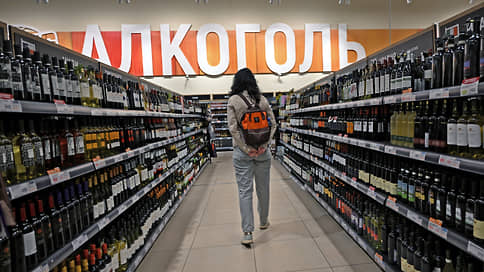Food sales are growing faster than alcoholic beverages
[ad_1]

Expansion of the range and growing interest in new brands contribute to active demand for food products. According to NielsenIQ, from January to September, food became the leader in physical sales growth among consumer goods, while alcohol fell to second place for the first time in seven years, mainly due to weaker demand for beer and vodka. Producers of the latter, however, expect an increase in demand due to the refusal of some consumers to become more expensive imported alcoholic beverages.
For the first time in seven years, alcoholic beverages lost their leadership in physical sales dynamics among fast-moving consumer goods (FMCG), according to a NielsenIQ study. According to the national retail audit, from January to September 2023, food took first place in terms of growth with 3.8% year-on-year, and alcohol dropped to second place with an increase of 3.3%. Across the entire FMCG market, which NielsenIQ also includes tobacco and non-food products, unit sales increased 2.3% year-on-year.
As NielsenIQ notes, the last time a similar situation was observed was in 2016, when food sales were recovering after the crisis of 2014–2015. Saltanat Nysanova, director of customer relations at NielsenIQ, explains the current trend, among other things, by increased demand in conditions of relatively low inflation for products. According to Rosstat, from October 2022 to October 2023, food prices increased by 6%. As Ms. Nasynova points out, the range of food categories expanded in 2023 after narrowing in 2022, and buyers were more confident in spending on new products and premium brands.
According to NielsenIQ, new brands have been actively launched this year in the categories of confectionery, soft drinks, tea and coffee.
X5 Group (Pyaterochka, Perekrestok), Magnit, Lenta, Auchan and Metro did not provide comments.
Senior analyst at Gazprombank Marat Ibragimov says that household incomes have been growing since October 2022, but until around this summer, consumers mainly chose a saving behavior model. Rusbrand executive director Alexey Popovichev notes that the switch to new imported or local brands can be facilitated by a reduction in investments in marketing from global manufacturers.
In addition, the expert points out, some consumers may increase spending on FMCG due to savings on durable goods, which are more susceptible to price increases due to the devaluation of the ruble.
In the alcohol market, NielsenIQ points out, the growth rate of demand is slowing down. First of all, this concerns beer and vodka, which account for over 90% of natural sales of all alcohol. According to NielsenIQ, beer volume sales for the nine months of 2023 increased by 0.5% year-on-year, while vodka sales decreased by 1%. A year earlier, demand for these categories grew by 0.8% and 3.1% year-on-year, respectively.
Igor Khavsky, co-owner of the distributor SWAM Group and the Gletcher brewery, notes that the beer market has long been stagnant, per capita consumption of the drink is declining, and companies are expanding their portfolio with, for example, energy drinks. President of AB InBev Efes (Stella Artois, Velkopopovicky Kozel, Klinskoye, etc.) Oraz Durdyev says that we can hope for market recovery in the absence of additional administrative pressure on business and new geopolitical risks.
The Rust Group of Companies (Russian Standard, Green Mark) indicates that the dynamics of the vodka market are affected by the high base of 2022 with explosive growth in sales, and there is no slowdown in demand over the horizon of the last three to five years. Commercial Director of Tatspirtprom Group of Companies (Tundra, Russian Currency) Yuri Karyakin points out that in 2022, consumption of strong alcohol grew by a record 6% and this year the company’s shipments in the segment are growing. At the Alcohol Siberian Group (ASG; “Five Lakes”, “White Birch”), overall retail sales of vodka increased, and the decline affected only the economy segment. According to the ASG, in the future the demand for vodka will be supported by the desire of consumers to save money on other types of alcohol, as well as a shift in demand from the more expensive whiskey imported through parallel imports.
[ad_2]
Source link





